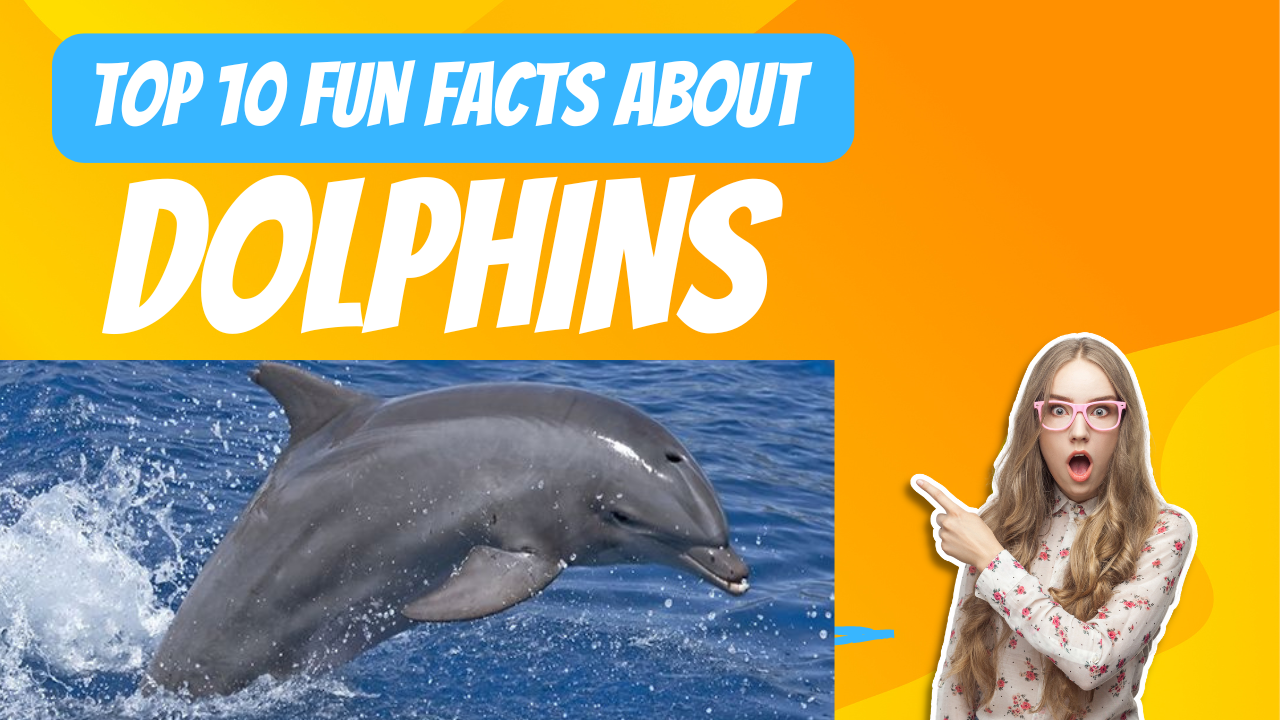Table of Contents
ToggleTop 10 Fun Facts about Dolphins for Kids
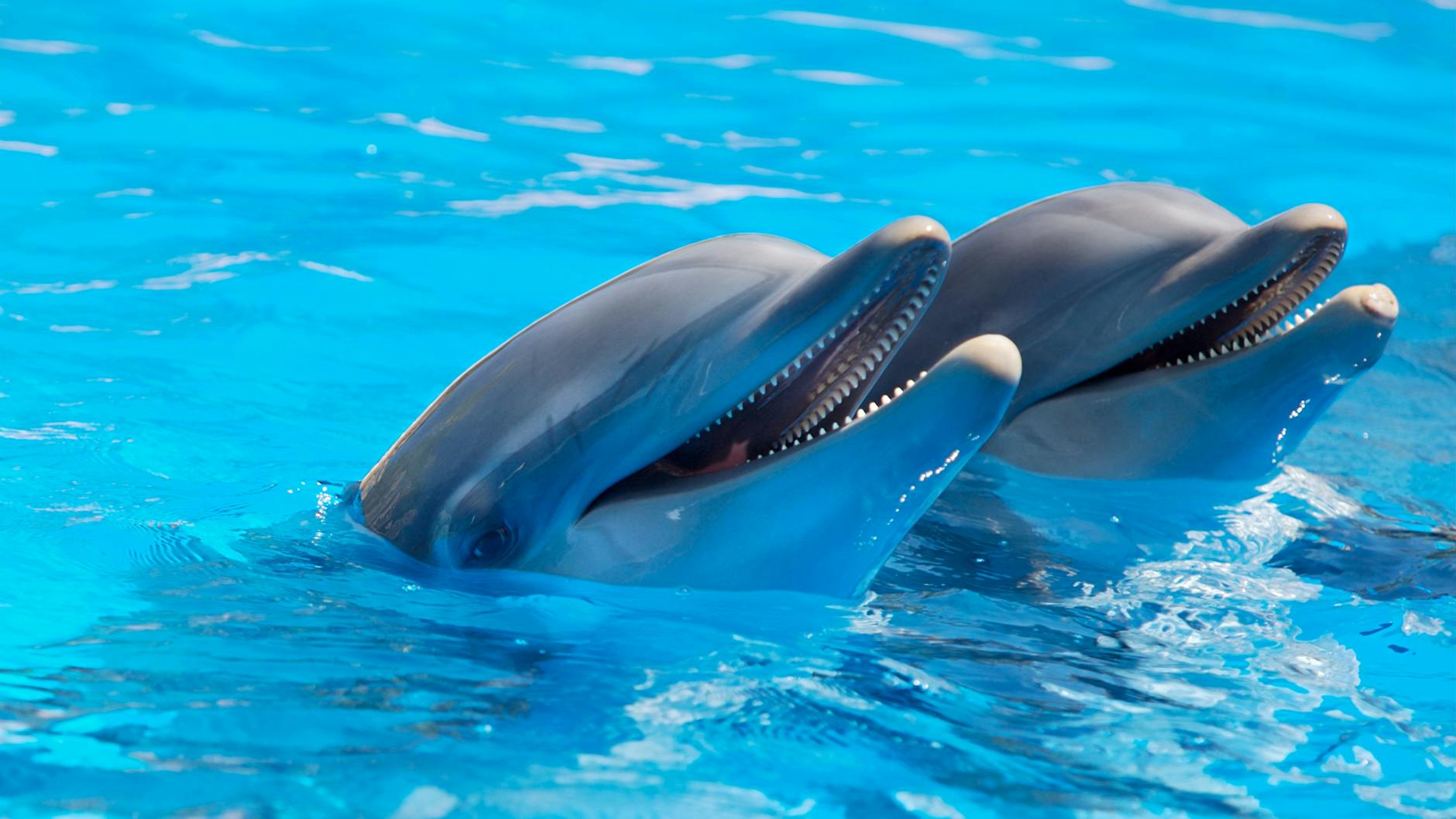
Did you know that dolphins are some of the most amazing creatures in the ocean? These incredible animals are not just cute and playful – they’re also super smart and full of surprises! Get ready to dive into a world of fascinating facts about our flippered friends that will make you say “Wow!”
Imagine swimming alongside a group of dolphins, hearing their cheerful clicks and whistles, and watching them leap gracefully out of the water. Sounds exciting, right? Well, there’s so much more to discover about these wonderful sea mammals! From their impressive intelligence to their unique way of living, dolphins have captivated humans for centuries.
Are you ready to explore the top 10 fun facts about dolphins that will make you the coolest kid in your class? Let’s jump right in and uncover some mind-blowing information about these fantastic ocean dwellers – from their surprising family life to their playful nature and even the challenges they face in today’s world. Get set for an adventure that will make you appreciate these remarkable creatures even more!
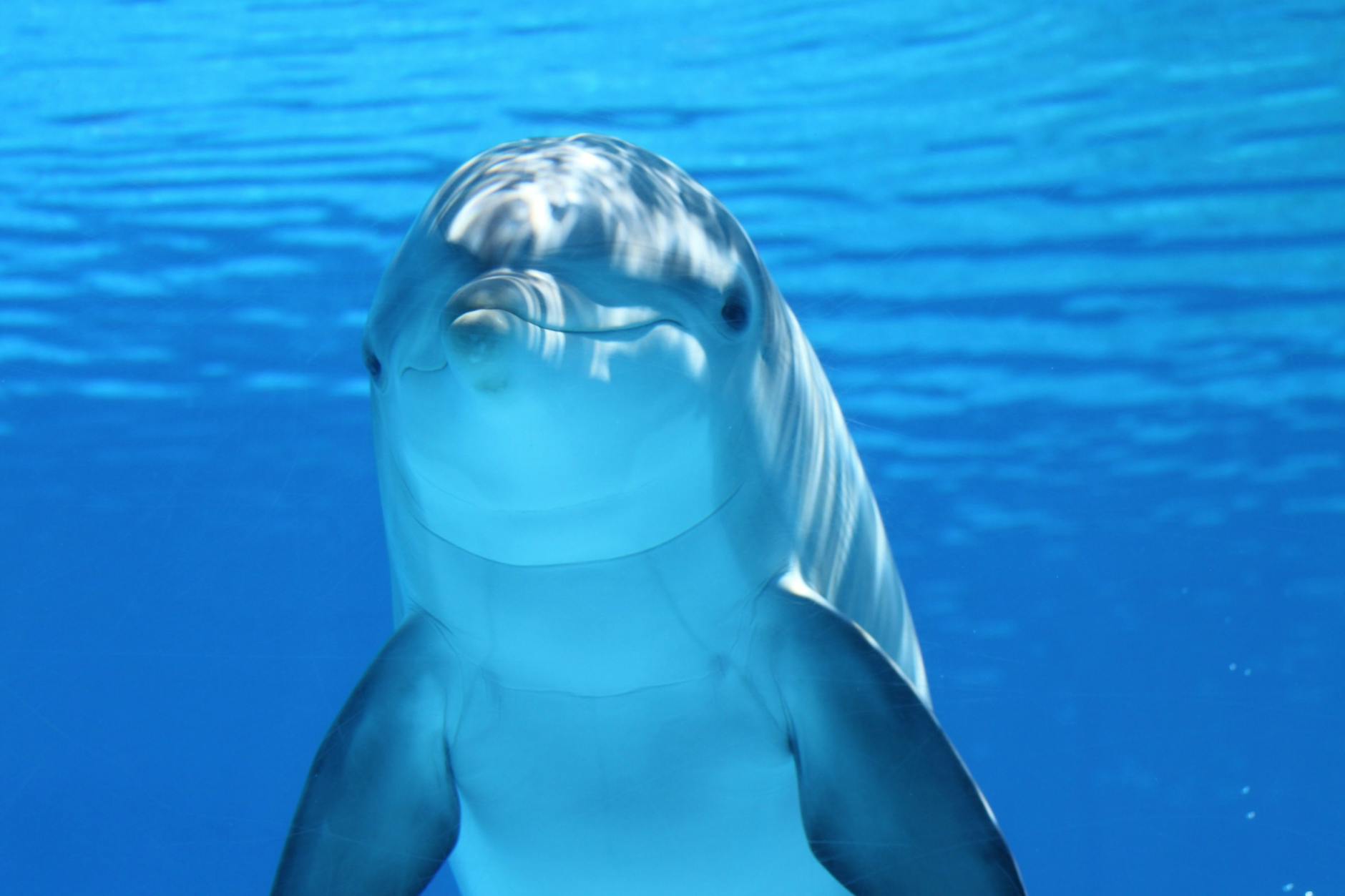
1. Dolphins are mammals, not fish
Many people mistakenly think dolphins are fish because they live in water, but they’re actually mammals! Let’s explore three key characteristics that make dolphins mammals:
A. They breathe air through blowholes
Unlike fish, which extract oxygen from water using gills, dolphins must come to the surface to breathe air. They do this through a blowhole on top of their head, which is essentially their nose! Here’s a fun fact: dolphins can hold their breath for up to 15 minutes underwater before needing to surface for air.
B. Dolphins are warm-blooded
Unlike cold-blooded fish, dolphins maintain a constant body temperature, just like humans and other mammals. This allows them to live in various water temperatures, from tropical seas to colder ocean waters.
C. They give birth to live young
One of the most defining characteristics of mammals is that they give birth to live babies, and dolphins are no exception. Baby dolphins, called calves, are born tail-first and must quickly swim to the surface for their first breath of air.
Here’s a comparison table of dolphins and fish:
| Characteristic | Dolphins | Fish |
|---|---|---|
| Breathe | Air through blowhole | Water through gills |
| Blood temperature | Warm-blooded | Cold-blooded |
| Reproduction | Live birth | Lay eggs (most species) |
| Tail position | Horizontal | Vertical |
| Skin | Smooth, rubbery | Covered in scales |
Understanding these differences helps us appreciate how unique and special dolphins are in the animal kingdom. Next, we’ll explore another fascinating aspect of these incredible creatures: their remarkable intelligence.
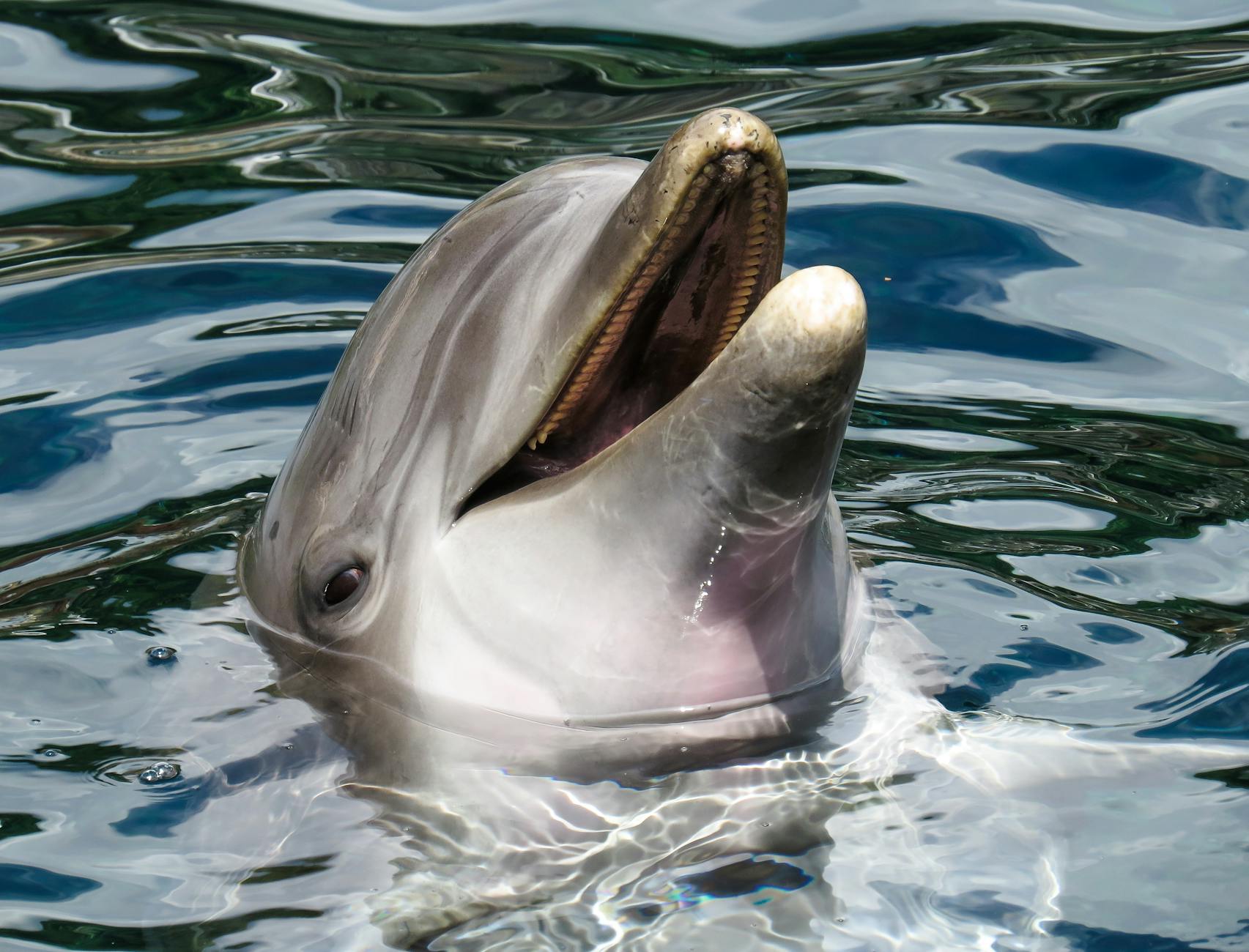
2. Dolphins are incredibly smart
Now that we’ve established that dolphins are mammals, let’s explore their remarkable intelligence. Dolphins are widely recognized as one of the most intelligent animals on Earth, displaying cognitive abilities that often surprise and delight researchers.
A. They use tools in the wild
Dolphins have been observed using tools in their natural habitat, a behavior once thought to be unique to humans and primates. For example:
Some dolphins use sponges on their beaks to protect themselves while foraging for food on the ocean floor
Others have been seen using shells to catch fish
This tool demonstrates problem-solving skills and adaptability, key indicators of intelligence.
B. Dolphins can learn tricks and solve puzzles
Dolphins’ ability to learn and perform complex tasks is well-documented:
They can understand and respond to human hand signals and whistles
Dolphins can learn to perform elaborate routines in aquariums and marine parks
Researchers have created puzzles for dolphins, which they solve with enthusiasm
| Puzzle Type | Description | Skill Demonstrated |
|---|---|---|
| Bubble rings | Creating and manipulating underwater bubble rings | Fine motor control |
| Mirror recognition | Recognizing themselves in mirrors | Self-awareness |
| Symbol matching | Matching objects to corresponding symbols | Abstract thinking |
C. They have large, complex brains
The dolphin brain is impressive in both size and structure:
Relative to body size, dolphin brains are second only to humans
Their brain structure is highly complex, with a large cerebral cortex
Dolphins have a specialized region for processing acoustic information, crucial for their echolocation abilities
These brain characteristics contribute to dolphins’ advanced cognitive abilities, including problem-solving, social cognition, and communication skills.
Next, we’ll explore how these intelligent creatures use their impressive brains to communicate in unique and fascinating ways.

3. Dolphins communicate in unique ways
Now that we’ve explored the intelligence of dolphins, let’s dive into their fascinating communication methods. Dolphins are known for their complex and diverse ways of interacting with each other and their environment.
Each dolphin has a unique signature whistle
Just like humans have names, dolphins have their own individual “signature whistles.” These whistles are like unique identifiers that help dolphins recognize each other. Imagine having your own special sound that tells all your friends it’s you!
Dolphins have their own “language” of clicks and whistles
Dolphins use a variety of sounds to communicate, including:
Whistles
Clicks
Squeaks
Buzzes
These sounds form a complex language that allows dolphins to share information about food, danger, and even their emotions. It’s like they’re having underwater conversations!
They use echolocation to find food
One of the most impressive communication skills dolphins possess is echolocation. This ability allows them to:
Locate prey
Navigate through murky waters
Avoid obstacles
Here’s how echolocation works:
| Step | Action |
|---|---|
| 1 | Dolphin produces a series of clicks |
| 2 | Sound waves travel through water |
| 3 | Waves bounce off objects |
| 4 | Echoes return to the dolphin |
| 5 | Dolphin’s brain interprets the echoes |
This amazing skill helps dolphins create a sonic picture of their surroundings, even in complete darkness!
Next, we’ll explore how these intelligent creatures live together in social groups called pods.
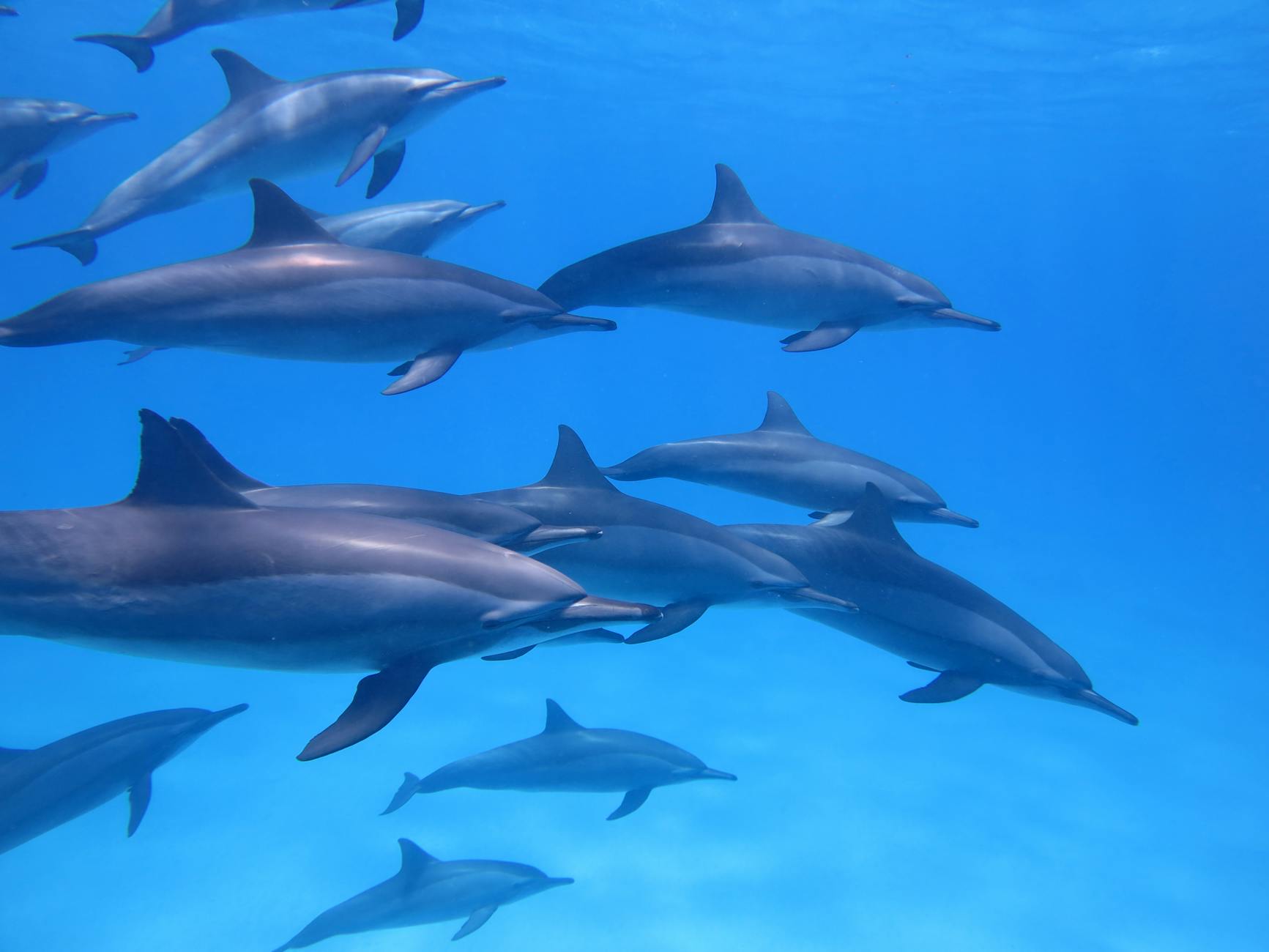
4. Dolphins live in family groups called pods
Now that we’ve explored the unique communication methods of dolphins, let’s dive into their social structure. Dolphins are highly social creatures that live in groups called pods. These family units are fascinating and play a crucial role in their survival and well-being.
A. Dolphins form strong social bonds
Dolphins are known for their tight-knit communities. Within their pods, they develop deep connections with one another, much like human families. These bonds are essential for their emotional and physical well-being. Some interesting facts about dolphin social bonds include:
Dolphins recognize and remember each other even after years of separation
They show empathy and care for injured or sick pod members
Dolphins engage in playful activities to strengthen their relationships
B. They work together to hunt and protect each other
Teamwork is a hallmark of dolphin pods. Their collaborative efforts extend to various aspects of their daily lives, particularly in hunting and protection. Here’s a breakdown of how dolphins work together:
| Activity | Description |
|---|---|
| Hunting | Dolphins use coordinated strategies to herd fish and take turns feeding |
| Protection | They form defensive circles around vulnerable pod members when faced with predators |
| Babysitting | Adult dolphins often look after each other’s calves, allowing mothers to rest or hunt |
C. Pods can have up to 1,000 members
The size of dolphin pods can vary greatly depending on the species and environmental factors. While some pods are relatively small, others can be surprisingly large:
Coastal dolphin species typically form smaller pods of 2-15 members
Offshore species may gather in groups of hundreds or even thousands
The largest known pods can contain up to 1,000 individuals
These large gatherings, often called superpods, usually occur when several smaller pods come together temporarily for activities like hunting or mating.
As we move forward, we’ll explore the diverse world of dolphin species, each with its own unique characteristics and adaptations.
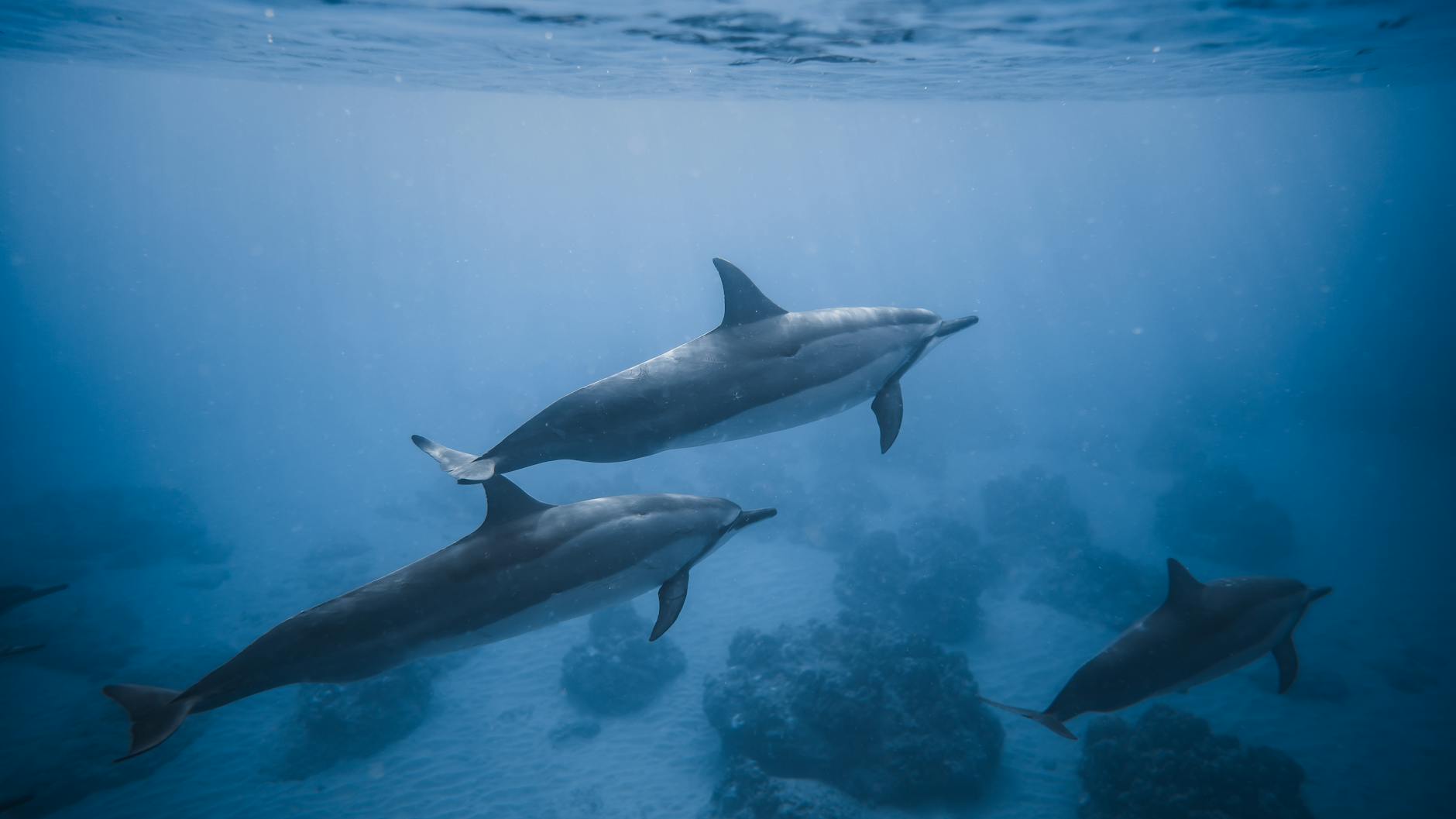
5. There are many different types of dolphins
When we think of dolphins, most of us picture the friendly, gray creatures with a curved dorsal fin. However, the world of dolphins is much more diverse than you might imagine. Let’s explore some fascinating facts about different dolphin species.
A. The largest dolphin is actually called a whale
Believe it or not, the largest member of the dolphin family isn’t even called a dolphin! The orca, also known as the killer whale, is actually the biggest dolphin species. Here’s a quick comparison:
| Dolphin Species | Average Length | Average Weight |
|---|---|---|
| Orca (Killer Whale) | 20-26 feet | 6,600-15,400 lbs |
| Bottlenose Dolphin | 6-13 feet | 660-1,100 lbs |
B. Some dolphins live in rivers
While most dolphins live in oceans, some species have adapted to freshwater environments. River dolphins are a unique group that inhabits rivers and estuaries. Here are a few examples:
Amazon River Dolphin (Pink Dolphin)
Ganges River Dolphin
Indus River Dolphin
These river dolphins have special adaptations, like longer snouts and more flexible necks, to help them navigate in murky river waters.
C. The bottlenose dolphin is the most well-known
When most people think of dolphins, they picture the bottlenose dolphin. This species is famous for several reasons:
They’re often seen in aquariums and marine parks
They frequently appear in movies and TV shows
They’re known for their intelligence and playful behavior
Their “smiling” appearance makes them particularly appealing to humans
Now that we’ve explored the diversity of dolphin species, let’s dive into their impressive swimming abilities in the next section.
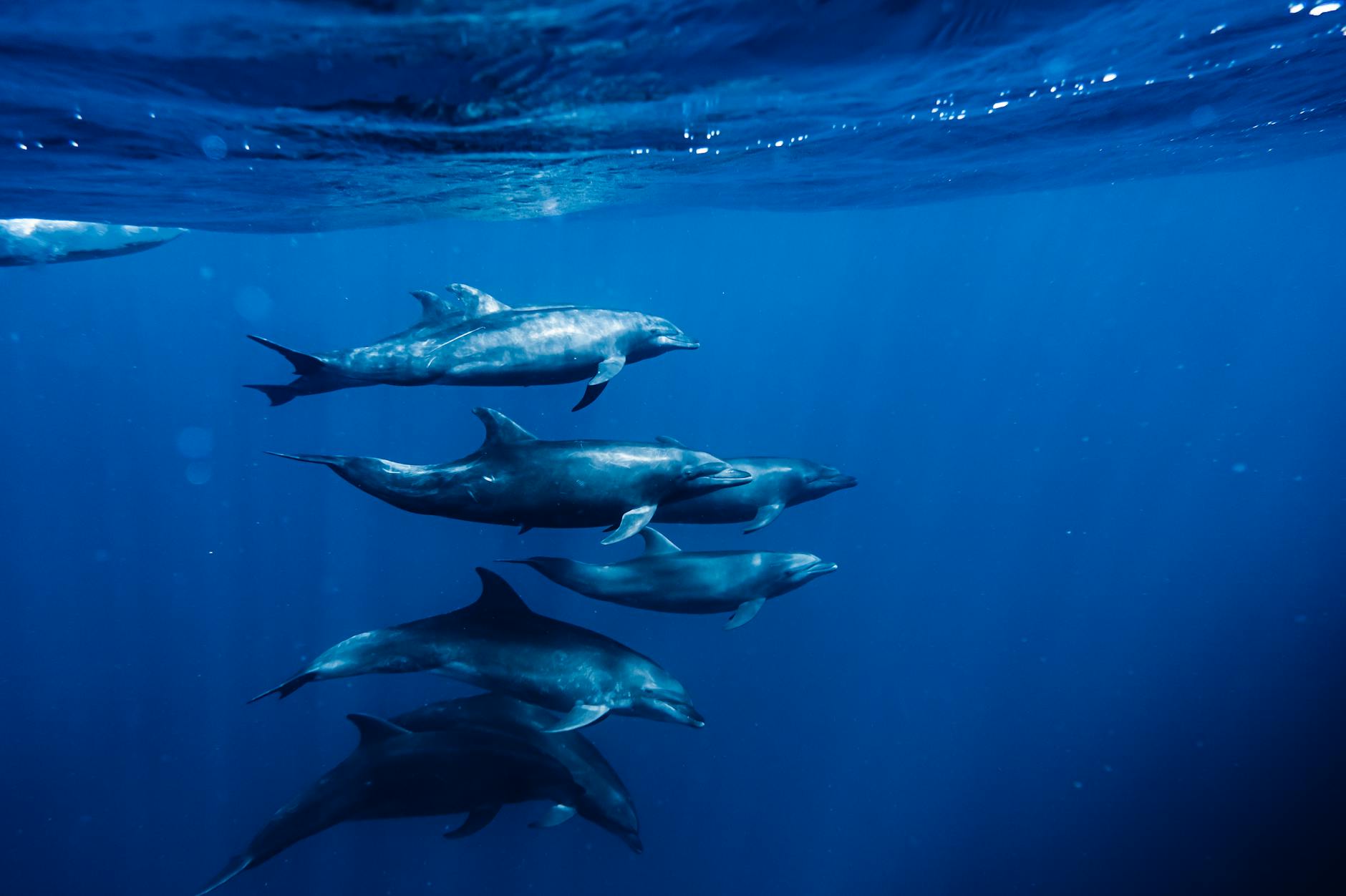
6. Dolphins are excellent swimmers
Now that we’ve explored the different types of dolphins, let’s dive into their incredible swimming abilities. Dolphins are truly remarkable swimmers, with a set of unique adaptations that make them masters of the ocean.
They can swim up to 25 miles per hour
Dolphins are built for speed in the water. Their streamlined bodies and powerful tails allow them to reach impressive speeds:
Average cruising speed: 6-8 mph
Top speed: Up to 25 mph
Short bursts: Can reach 35 mph
To put this in perspective, here’s a comparison of dolphin speeds with other sea creatures:
| Animal | Top Speed (mph) |
|---|---|
| Dolphin | 25 |
| Seal | 23 |
| Sea Turtle | 35 |
| Shark | 31 |
They sleep with one eye open while swimming
One of the most fascinating aspects of dolphin swimming is their ability to sleep while still moving. Dolphins have developed a unique sleeping method:
Only half of their brain sleeps at a time
One eye remains open to watch for predators
They continue to swim slowly during sleep
This adaptation allows dolphins to remain constantly alert and mobile, even while resting.
Dolphins can jump high out of the water
Not only are dolphins fast swimmers, but they’re also impressive acrobats. Their powerful tails enable them to leap several feet out of the water, a behavior known as “breaching.” This serves multiple purposes:
Communication with other dolphins
Removing parasites from their skin
Pure enjoyment and play
Some species, like the spinner dolphin, can rotate their bodies up to seven times during a single leap!
As we move on to explore their eating habits, it’s clear that dolphins’ swimming abilities play a crucial role in their daily lives, from hunting to socializing and even sleeping.
7. Dolphins have interesting eating habits
Now that we’ve explored dolphins’ swimming abilities, let’s dive into their fascinating eating habits. These intelligent marine mammals have some unique and surprising ways of finding and consuming their food.
A. They can eat up to 30 pounds of fish a day
Dolphins have quite an appetite! These aquatic hunters can consume an impressive amount of food daily. To put this into perspective:
| Dolphin’s Daily Diet | Equivalent Human Food |
|---|---|
| 30 pounds of fish | 120 quarter-pound burgers |
This high food intake is necessary to maintain their energy levels for swimming, playing, and staying warm in cool ocean waters.
B. Some dolphins use sponges to protect their noses while hunting
Dolphins are not just skilled hunters; they’re also clever tool users. In some populations:
Dolphins have been observed using sea sponges as protective “gloves”
They hold the sponges over their beaks while foraging on the seafloor
This behavior helps protect their sensitive snouts from sharp rocks and creatures
This remarkable adaptation showcases dolphins’ problem-solving abilities and their capacity to pass on learned behaviors to their offspring.
C. They swallow fish whole
Unlike humans, dolphins don’t chew their food. Instead:
They catch fish with their teeth
Position the fish head-first in their mouths
Swallow the fish whole
This efficient eating method allows dolphins to consume their prey quickly, which is essential when hunting in groups or evading potential predators.
Next, we’ll explore how these intelligent creatures aren’t all about feeding – they also know how to have a good time!
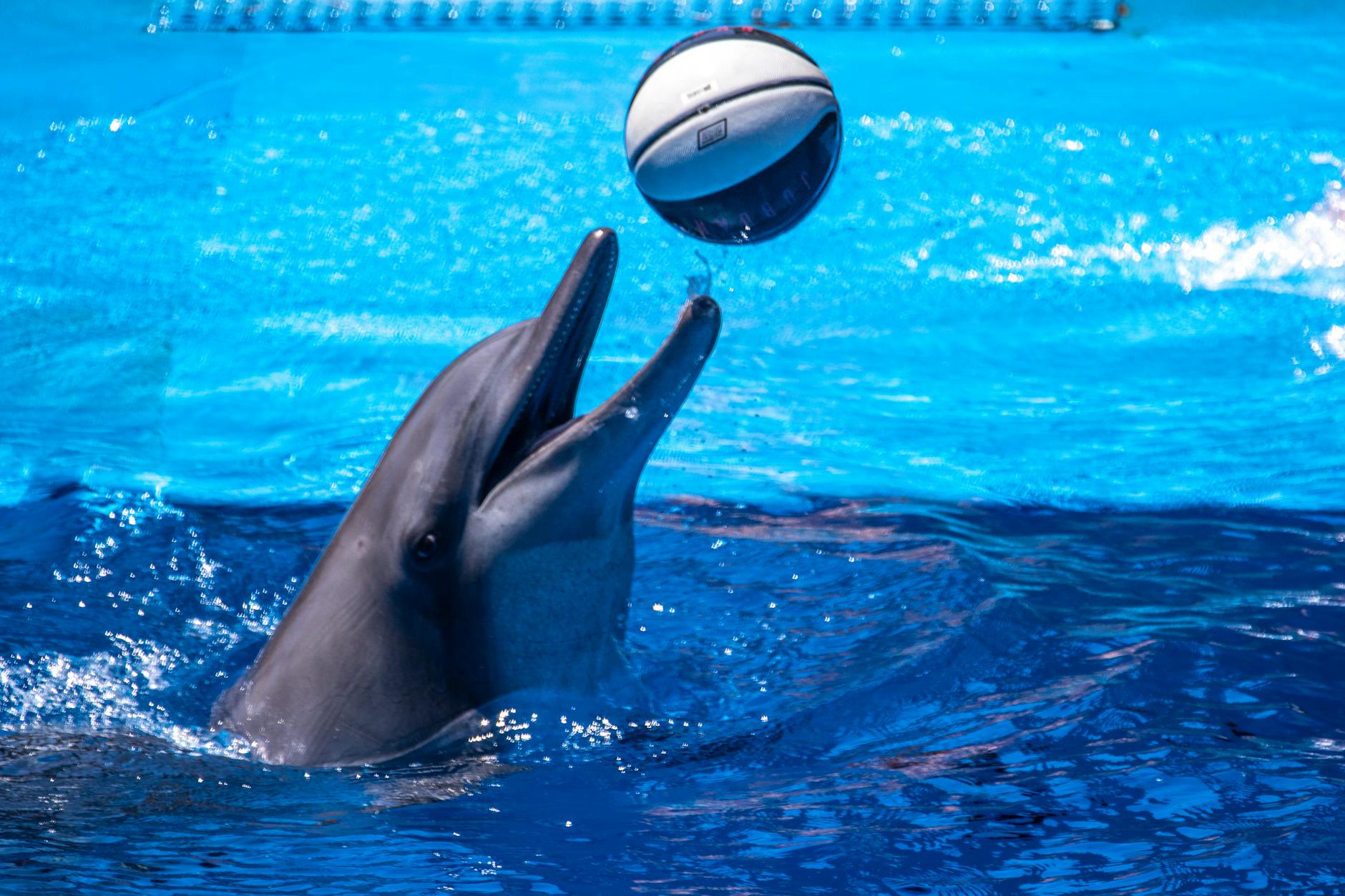
8. Dolphins play and have fun
Now that we’ve explored dolphins’ eating habits, let’s dive into their playful nature. Dolphins are known for their joyful and energetic behavior, often engaging in various activities just for fun. Their playfulness is not only entertaining but also serves important social and developmental purposes.
A. They play with seaweed and other objects
Dolphins demonstrate their creativity and curiosity by interacting with objects in their environment. Here are some ways dolphins play with seaweed and other items:
Tossing seaweed: Dolphins often grab seaweed with their beaks and toss it around.
Catch and release: They may pass objects like small fish or bubbles between pod members.
Balancing act: Some dolphins have been observed balancing objects on their rostrum (beak) or fins.
B. Dolphins create bubble rings for fun
One of the most fascinating dolphin behaviors is their ability to create and manipulate bubble rings. This skill showcases their intelligence and playfulness:
Blowing bubbles: Dolphins exhale a ring of air underwater.
Shaping the ring: They use their fins to perfect the circular shape.
Manipulating the ring: Dolphins can move the bubble ring, make it larger or smaller, and even pass it to other dolphins.
C. They surf waves for enjoyment
Dolphins are natural surfers, often riding waves purely for the thrill of it. Their wave-riding behavior includes:
| Surfing Technique | Description |
|---|---|
| Body surfing | Dolphins position themselves just behind the crest of a wave to ride it. |
| Bow riding | They swim in front of boats, using the boat’s wake as a wave to surf. |
| Wake jumping | Dolphins leap out of the water and over boat wakes, performing acrobatic tricks. |
These playful activities not only provide entertainment for dolphins but also strengthen social bonds within their pods and help young dolphins develop important skills. As we move on to explore dolphins’ long and fascinating history, we’ll see how their playful nature has captivated humans for centuries.

9. Dolphins have a long and fascinating history
Dolphins have captivated human imagination for thousands of years, leaving an indelible mark on our culture, history, and mythology. Let’s dive into the rich tapestry of dolphin lore and their enduring relationship with humans.
They’ve inspired many stories and myths
Dolphins have been the subject of countless tales and legends across various cultures. From ancient Greek mythology to modern literature, these intelligent creatures have played significant roles in our storytelling. Here’s a quick look at some famous dolphin-inspired stories:
Greek myth of Dionysus and the pirates
The dolphin-boy transformation in Ovid’s Metamorphoses
Modern novels like “The Music of Dolphins” by Karen Hesse
Dolphins have helped humans fish for centuries
One of the most remarkable aspects of dolphin history is their cooperation with human fishers. This partnership dates back hundreds of years and continues in some parts of the world today. Here’s a table showing some examples of dolphin-human fishing collaborations:
| Location | Type of Collaboration | Fish Targeted |
|---|---|---|
| Brazil | Dolphins herd fish towards nets | Mullet |
| Myanmar | Dolphins signal fishers when to cast nets | Various |
| Australia | Dolphins drive fish towards shore | Mullet, tailor |
Ancient cultures believed dolphins were sacred
Many ancient civilizations held dolphins in high regard, often considering them sacred or divine. This reverence has contributed to their protection and fascination throughout history. Some examples include:
Ancient Greeks associated dolphins with Apollo and Poseidon
Minoans of Crete featured dolphins prominently in their art
Some Native American tribes viewed dolphins as spiritual guides
The long and fascinating history of dolphins showcases their enduring impact on human culture and our evolving relationship with these remarkable marine mammals. As we continue to learn more about dolphins, their historical significance adds depth to our appreciation of these intelligent and charismatic creatures.
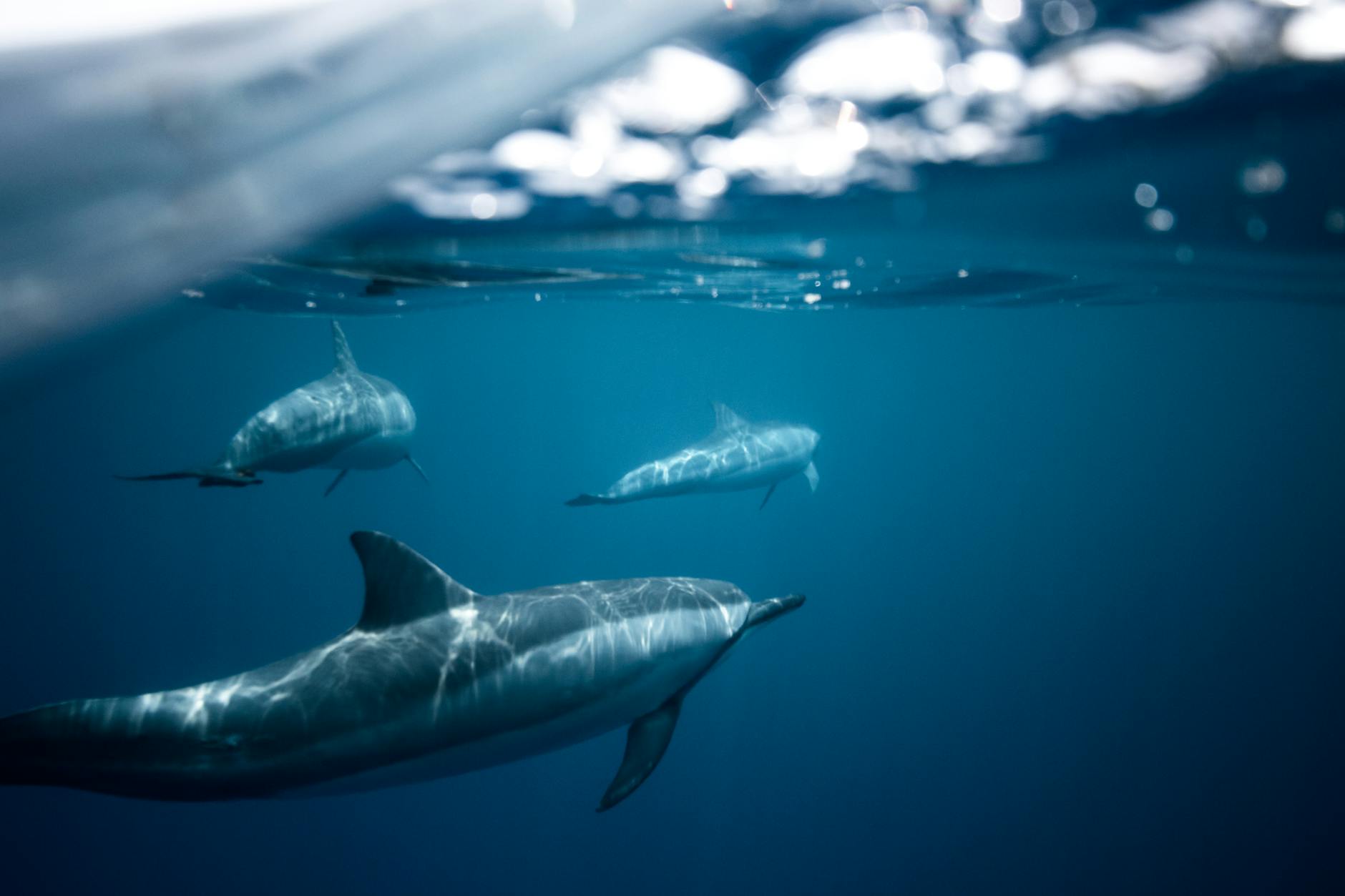
10. Dolphins Face Challenges in the Modern World
Dolphins are among the most beloved creatures in our oceans. Their playful attitudes and incredible intelligence have captivated many of us. However, these remarkable animals are facing numerous challenges in today’s world. As we dive into their struggles, we not only learn more about them but also about our actions impact their lives.
A. Pollution and Ocean Degradation
One of the biggest hurdles dolphins face is pollution. Our oceans are becoming increasingly polluted with plastic waste, chemicals, and industrial runoff.
Plastic: A Silent KillerDolphins often mistake plastic for food. From colorful wrappers to large fishing nets, these items can cause serious harm. A recent study showed that over 90% of dolphins examined had traces of plastic in their systems.
Chemical PollutionChemicals from agricultural runoff can find their way into the ocean, disrupting the marine ecosystem. These pollutants can accumulate in dolphin bodies, leading to health problems like immune system weakness and reproductive issues.
B. Climate Change
Climate change is another significant challenge for dolphins. Rising ocean temperatures can disrupt their habitat and food sources.
Changing EcosystemsAs waters warm, many fish species migrate to cooler areas, which can affect dolphins who rely on specific foods. This shift not only impacts their diet but also their migration patterns.
Habitat DestructionCoral reefs, which are vital for marine life, are dying at an alarming rate due to rising temperatures and ocean acidification. Dolphins, like many other marine animals, rely on these ecosystems for shelter and food.
C. Ship Strikes and Fishing Practices
With the oceans populated by ships and fishing boats, dolphins often face danger from human activities.
Ship StrikesCollisions with boats can be fatal for dolphins. Ship traffic is heavy in many habitats where dolphins reside, increasing the risk of accidents.
Bycatch in FishingDolphins sometimes get caught in fishing nets targeted at other species. This is known as bycatch, and it can lead to injury or death. Fishermen are increasingly aware of this issue, but it remains a persistent concern.
Conservation Efforts
Despite these challenges, there’s hope! Many organizations work tirelessly to protect dolphins and their environments.
Education and AwarenessEducating the public about dolphin conservation is crucial. Awareness campaigns encourage people to reduce plastic use and support sustainable fishing practices.
Legislation and ProtectionGovernments around the world are beginning to implement stricter regulations to protect dolphin habitats. This includes placing restrictions on pollution and creating marine protected areas.
Dolphins are truly remarkable creatures that captivate the imagination of both children and adults alike. From their impressive intelligence to their playful nature, these marine mammals never cease to amaze us. We’ve learned that dolphins are not only excellent swimmers but also have unique ways of communicating and living in close-knit family groups called pods.
As we’ve discovered, there’s so much more to dolphins than meets the eye. Their diverse species, fascinating history, and complex behaviors make them an endless source of wonder. However, it’s important to remember that dolphins face challenges in our modern world. By learning more about these incredible animals, we can better appreciate and protect them, ensuring that future generations can continue to marvel at the wonders of dolphins in our oceans.


